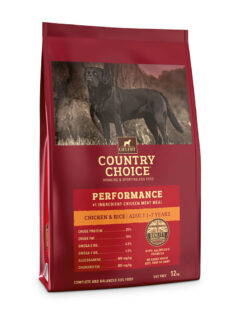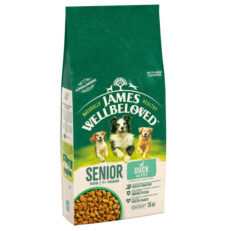
In recent years, the pet food industry has witnessed a significant shift towards fresh dog food, a trend driven by pet owners’ increasing focus on the health and well-being of their furry companions. This chapter introduces the concept of fresh dog food, underscoring its rising popularity and the pivotal role diet plays in a dog’s overall health. We’ll set the stage for an in-depth exploration of the benefits and drawbacks of incorporating fresh dog food into your pet’s diet.
The Rise of Fresh Dog Food
Fresh dog food, often characterized by its use of whole, unprocessed ingredients, is becoming a preferred choice for many dog owners. This shift is influenced by a growing awareness of the quality of ingredients in traditional dog foods and a desire to provide pets with meals that are closer to what they might naturally eat. Fresh dog food is seen as a way to offer dogs a diet that is not only appetizing but also nutritionally superior.
Importance of Diet in Canine Health
The diet of a dog is a fundamental aspect of its overall health. Nutrition affects everything from a dog’s coat and energy levels to its long-term health and susceptibility to diseases. A balanced diet, tailored to a dog’s specific needs, can lead to improved digestion, better weight management, and overall enhanced well-being. Understanding the impact of dietary choices is crucial for responsible dog ownership.
Setting the Stage for Evaluation
As we delve deeper into the world of fresh dog food, we will evaluate its pros and cons. This includes examining nutritional benefits, cost implications, convenience factors, and the potential impact on a dog’s health. The goal is to provide a comprehensive overview that helps dog owners make informed decisions about their pets’ diets.
The Benefits of Fresh Dog Food
Improved Nutrition and Ingredient Quality Fresh dog food typically comprises high-quality ingredients that are often sourced more responsibly than those in conventional dog food. This means fresher meats, vegetables, and fruits, which contribute to a more nutrient-rich diet. The improved nutrition provided by these ingredients can lead to a host of health benefits for dogs, including better coat condition, increased energy levels, and overall enhanced well-being. Additionally, fresh dog food often contains fewer processed ingredients, contributing to a more natural diet that is closer to what dogs would eat in the wild.
Fewer Additives and Preservatives One of the significant advantages of fresh dog food is the minimal use of additives and preservatives. Many traditional dog foods contain chemicals to extend their shelf life, which can be unnecessary and sometimes harmful in the long term. Fresh dog food, with its emphasis on natural ingredients, typically avoids these additives, offering a cleaner and healthier eating option for dogs.
Enhanced Palatability and Taste Fresh dog food is often more palatable and appealing to dogs than traditional kibble or canned foods. The use of fresh ingredients and the lack of heavy processing mean the food retains more of its natural flavor and texture, which can be particularly beneficial for picky eaters or older dogs with diminished appetites.
Potential Health Benefits Switching to fresh dog food can lead to noticeable health benefits. Many dog owners report improved digestion in their pets, with fewer gastrointestinal issues and better stool quality. Additionally, fresh diets can sometimes alleviate allergies and skin conditions, as they are free from common allergens found in many commercial dog foods. Improved dental health and weight management are other potential benefits noted by pet owners.
Factors to Consider When Choosing Fresh Dog Food
Budget Considerations
One of the primary factors to consider when deciding on fresh dog food is your budget. Fresh dog food often comes at a higher price point compared to traditional dry or canned foods. It’s important to evaluate your monthly pet care budget and determine if the cost of fresh food is sustainable in the long term. Remember, while fresh food may be more expensive upfront, it could potentially lead to lower veterinary bills over time due to improved health and nutrition.
Dietary Requirements and Specific Health Concerns
Every dog has unique dietary needs based on their age, breed, activity level, and health status. Fresh dog food can often be tailored to meet specific dietary requirements and address health concerns such as allergies, sensitivities, or chronic conditions like diabetes. Consult with a veterinarian to understand your dog’s nutritional needs and whether a fresh food diet would be beneficial. For dogs with specific health issues, the customized nutrition of fresh food could be particularly advantageous.
Convenience and Time Constraints
While fresh dog food can be nutritionally superior, it also requires more preparation time than traditional dog food. Assess your daily routine and consider if you have the time to prepare fresh meals, or if a pre-packaged fresh food subscription service is a viable option. Storage is another aspect; fresh food needs refrigeration, unlike dry kibble. Weigh these factors against your lifestyle and time constraints to determine if fresh dog food is a practical choice for you and your dog.
Transitioning from Traditional to Fresh Dog Food
Transitioning your dog from traditional to fresh food should be a gradual process. A sudden change in diet can cause digestive upset. Start by mixing a small amount of fresh food with their current food, gradually increasing the proportion of fresh food over several weeks. Monitor your dog’s response to the new diet, including their digestion, energy levels, and overall health. This gradual transition also allows you to gauge whether the fresh food diet is positively impacting your dog’s wellbeing.
Evaluating These Factors for Your Situation
To evaluate these factors for your unique situation, consider the following steps:
Financial Assessment: Analyze your overall pet care budget and the cost difference between your current dog food and the fresh food options available.
Health Benefits vs. Cost: Weigh the potential health benefits against the cost. If your dog has specific health issues that could be mitigated by a fresh diet, this might justify the higher price.
Lifestyle Compatibility: Assess your daily routine and decide if you can realistically accommodate the preparation, storage, and feeding of fresh dog food.
Consult a Professional: Discuss with a veterinarian or a canine nutritionist to get a professional opinion on what diet is best suited for your dog’s individual needs.
Comparing Costs
Analyzing the Financial Aspects of Fresh vs. Traditional Dog Food
Choosing between fresh dog food and traditional commercial dog food involves more than just comparing price tags. It’s a decision that encompasses long-term health benefits, potential cost savings in veterinary bills, and finding a brand that aligns with both your budget and your dog’s nutritional needs. In this section, we’ll break down the cost analysis to help you make an informed decision.
Initial Price Comparison
At first glance, fresh dog food typically appears more expensive than traditional kibble or canned foods. This is largely due to the higher quality of ingredients, less processing, and often, the customization to your dog’s specific dietary needs. However, the initial cost isn’t the only factor to consider.
Long-term Health Benefits and Cost Savings
Nutritional Value: Fresh dog food can offer superior nutritional benefits compared to some traditional dog foods. Higher quality ingredients and fewer fillers can lead to better overall health for your dog.
Reduced Vet Bills: A well-balanced, nutritious diet can contribute to a stronger immune system and a lower risk of diet-related health issues. This could potentially translate to fewer trips to the vet, saving money in the long run.
Portion Control: Fresh dog food often comes in pre-portioned packages, which can help in managing your dog’s weight. Overfeeding is a common issue with traditional dog foods, leading to obesity and related health problems.
Choosing the Right Brand
Budget Considerations: It’s important to find a fresh dog food brand that fits your budget. Prices can vary significantly among brands, so shop around and compare options.
Customization to Dog’s Needs: Some brands offer customized meal plans based on your dog’s age, breed, activity level, and health conditions. While this might be more expensive, it ensures that your dog is getting exactly what they need.
Subscription Services: Many fresh dog food companies operate on a subscription model, which can sometimes offer cost savings over one-time purchases.

Making the Decision
Summary of Key Points
- Improved Nutrition and Ingredient Quality: Fresh dog food offers superior nutrition due to high-quality, less processed ingredients, leading to overall better health and vitality in dogs.
- Fewer Additives and Preservatives: This diet minimizes the intake of unnecessary chemicals, contributing to a cleaner and potentially safer eating experience for your pet.
- Enhanced Palatability and Taste: Fresh dog food is often more appealing to dogs, making it an excellent choice for picky eaters or older dogs with appetite issues.
- Potential Health Benefits: Many dogs experience better digestion, reduced allergies, improved skin and coat health, and other positive health outcomes when switched to a fresh diet.
- Real-Life Testimonials: Stories from other dog owners who have seen significant improvements in their pets’ health can be a helpful guide in making your decision.
Weighing Benefits and Costs
When considering a switch to fresh dog food, it’s important for pet owners to weigh the benefits against the costs. While the health advantages are significant, fresh dog food can be more expensive and require more storage space than traditional dog food. It may also involve a more time-consuming preparation process. Owners should consider their budget and lifestyle constraints alongside the potential health benefits for their pet.
Final Insights and Recommendations
- Assess Your Dog’s Specific Needs: Every dog is different. Consider your dog’s age, breed, health condition, and dietary preferences when deciding on a diet change.
- Consult with a Veterinarian: Before making any significant changes to your dog’s diet, it’s advisable to consult with a veterinarian. They can provide guidance based on your dog’s health history and nutritional needs.
- Consider a Gradual Transition: If you decide to switch to fresh dog food, do so gradually. A sudden change in diet can upset a dog’s digestive system.
- Monitor Your Dog’s Health: Pay close attention to your dog’s health and behavior after the switch. Improvements in energy levels, coat quality, and overall demeanor are good indicators of the diet’s effectiveness.
















